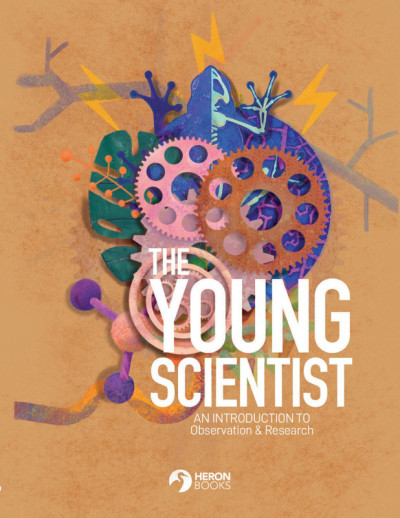We use cookies to make your experience better. To comply with the new e-Privacy directive, we need to ask for your consent to set the cookies. Learn more.
Young Scientist - Introduction to Observation and Discovery
Encouraging young scientists to recognize the power found in their personal curiosity, this unit helps students develop observation and discovery skills. It also teaches research skills, developing a hypothesis, scientific experimentation and methodology, fields of science and more. Additional materials include student imagination, the included Journal, and items or places familiar to the student.
The Young Scientist – An Introduction to Observation and Discovery is a lively, engaging exploration of what science is, and what it means to be a scientist. Told through stories about the methods and accomplishments of a number of past and present-day scientists, it is all about the nature of scientific investigation and how to do it. Starting with the importance of curiosity, the book highlights the roles of observation, research, hypothesis, experimentation, the scientific method, and the sharing of knowledge. Sections are accompanied by hands-on activities that provide opportunities to be a scientist.
This beautifully illustrated book with its clear, simple text and interesting activities, encourages observation skills, creative thinking, experimentation, discovery and independence of thought--all characteristics of successful scientists. Its accompanying learning guide takes a student step-by-step through the book and activities.
Hands-on and self-pacing, this new science series meets the learning needs of diverse learners. Courses are well-written, engaging, and focus on mastery of information. With the flexible, independent pacing, students should expect to complete each course in 10-17 hours, with an end of unit exam to ensure mastery. Home Study Kits include several components: the softcover Student Text, the Student Learning Guide, and Teacher Resource Packet. Written from a religiously neutral perspective, so no evolution or intelligent design is discussed.
Abundantly illustrated, the textbook is written to the student and provides many hands-on activities. Students will appreciate the well placed spacing of text and graphics. The layout is truly inviting and not visually overwhelming. The Student Learning Guide supports independent learning by giving students the course purpose and basic instructions to follow. Following this brief introduction, the guide provides steps to complete in order. Steps cover chapter readings and activities. After completing each step, lines are provided for students to initial, and on occasion, the teacher/parent also verifies the step is completed, and initials. Activities vary and include drawing and labeling in a science journal, finding related items, discussing with the teacher, and related hands-on activities or experiments. See individual courses for more detail. The Teacher Resource Packet includes the overall publisher philosophy called Swimming Upstream, background information with materials list, the end of unit exam, exam answers, and a Certificate of Achievement. Components are sold in sets called Home Study Kits and are not available individually. Topical Home Study Kits are available individually or in grade level packages that align with the publisher's recommended sequence:
- Take a Closer Look - An Introduction to Microscopes for Young Scientists
- World of Plants - How Plants Live & Grow for Young Scientists
- Let's Find it! - All About Maps and Globes for Young Scientists
- Light Bulbs, Switches and Batteries - Hands-on Electricity for Young Scientists
- Our Amazing Planet - Introduction to Geography for Young Scientists
- The Young Scientist - An Introduction to Observation and Discovery
- The Fabulous Human Body - Anatomy for Young Scientists
- Let's Make Things Go! - All About Engines for Young Scientists
- World of Electricity - Everyday Electricity for Young Scientists
- Circulation of the Blood - The Circulatory System for Young Scientists
- World of Machines - An Introduction to Simple Machines for Young Scientists
| Product Format: | Other |
|---|---|
| Brand: | Heron Books |
| Grades: | 4-6 |
| ISBN: | 9780897393058 |
| Length in Inches: | 11.5 |
| Width in Inches: | 9 |
| Height in Inches: | 0.5 |
| Weight in Pounds: | 1.35 |

